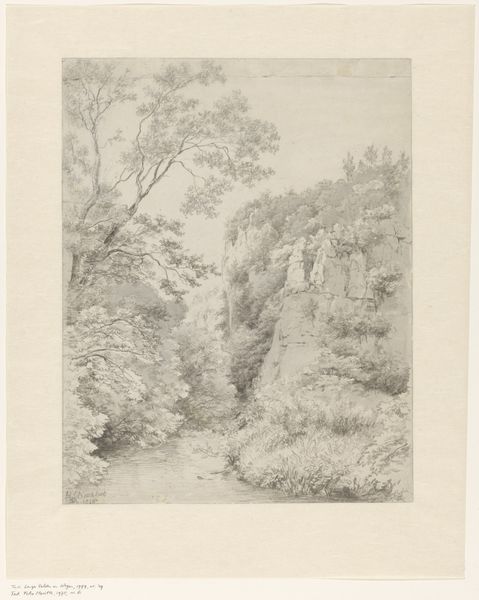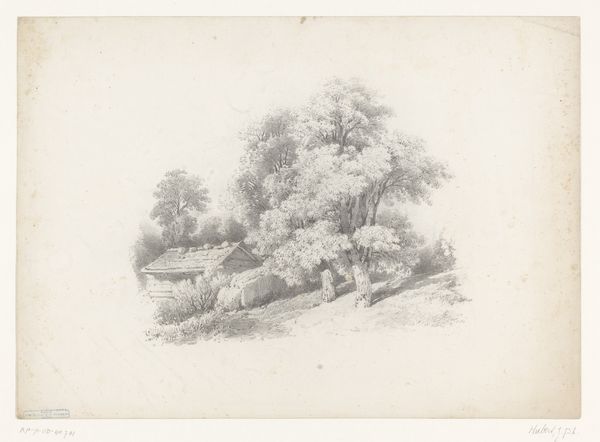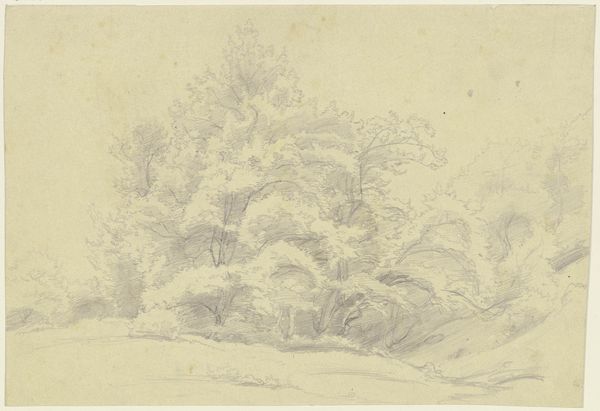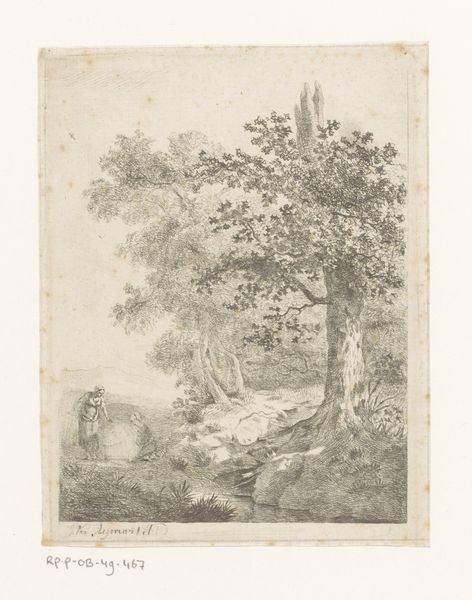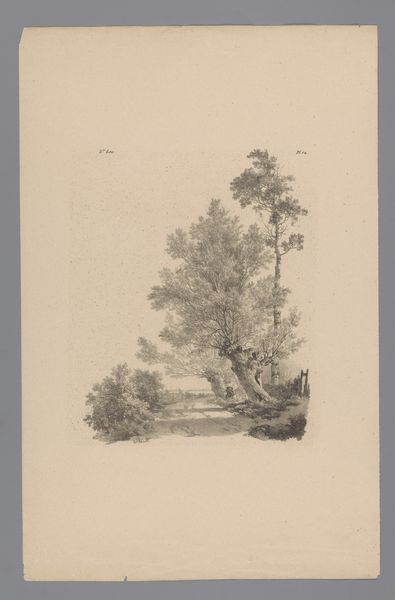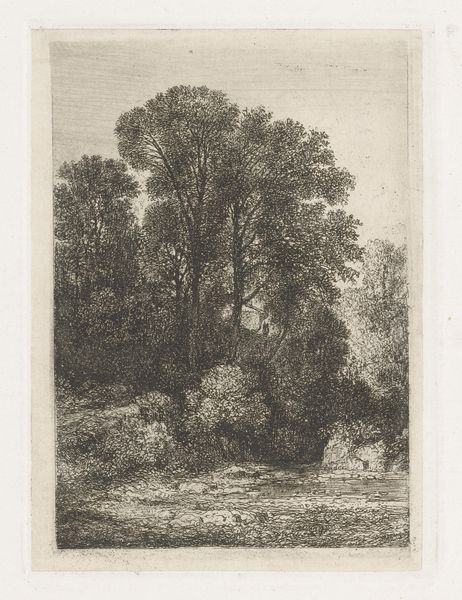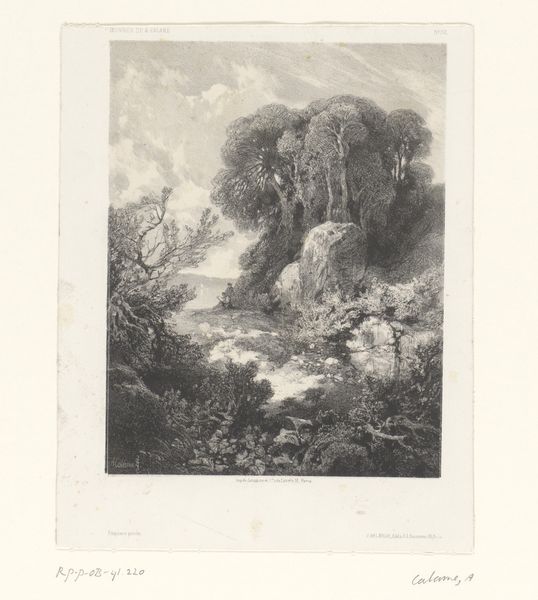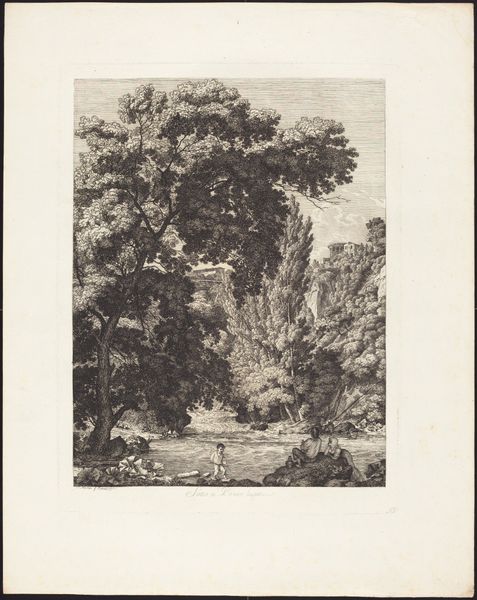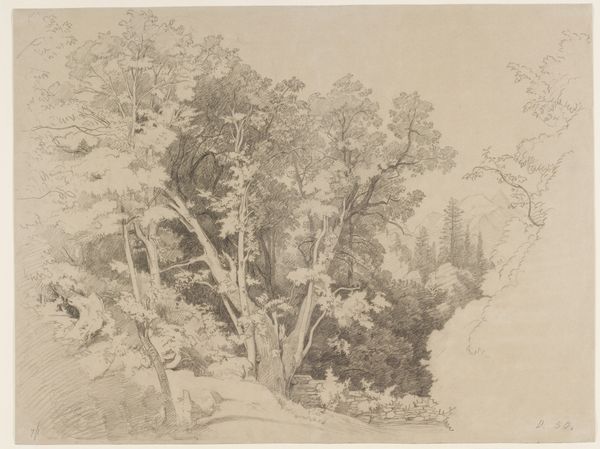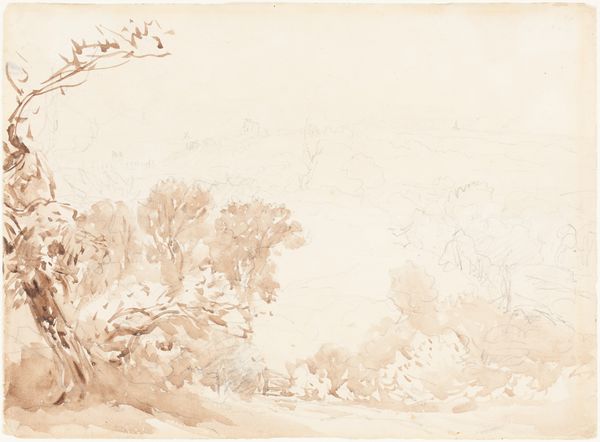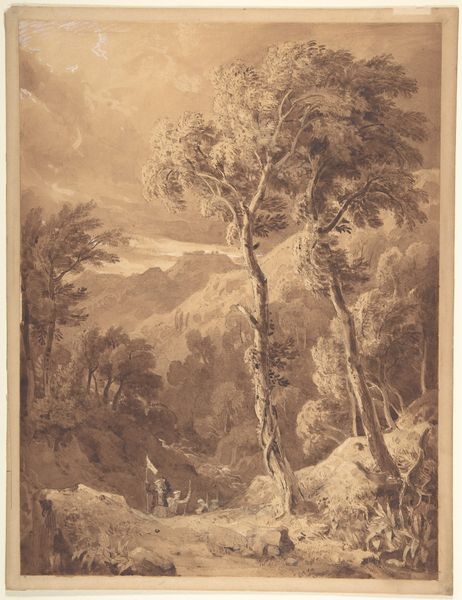
Dimensions: height 390 mm, width 280 mm
Copyright: Rijks Museum: Open Domain
Curator: Before us, we have a landscape titled "Begroeid dal met een hoge rots en een beek," or "Overgrown valley with a high rock and a stream." It's attributed to Lodewijk Johannes Kleijn, dating somewhere between 1827 and 1897. The work employs drawing with ink, watercolor, and pencil on paper. Editor: Oh, it's a quiet one, isn't it? Immediately, I feel drawn to its stillness. The muted palette lends a real sense of calm. I feel like I'm peering into a memory. Curator: The natural palette contributes, I think, to an overall sense of organic unity. The blending of materials suggests an economy of means typical of plein air sketching practices from the Romantic era. Note the paper itself; its texture plays a significant role, especially under watercolor. Editor: Yes, and see how the artist used the varying greys to evoke so much texture? The rough surface of the rock formation contrasts so beautifully with the softer foliage. It feels so detailed and delicate even with such subdued tones. There's something timeless about this technique, a blending of observation and gentle, practiced artistry. I almost feel I could reach out and touch that rock. Curator: Precisely, consider the romanticism classification we often give it; in addition to capturing observed phenomena of nature, these sketches were valued objects. What you term the "delicate" also emerges from material availability— or lack thereof. Paper of this kind represents an industry ready to sell a bill of goods about experience of Nature to anyone ready to spend for it. Editor: Hmm. I agree that it can seem a touch transactional from that view, and yes the very existence of that paper is part of that economy; still, I see such reverence for the wild. This work makes me think, what are we leaving for future artists to sketch and to ruminate on? It almost creates a melancholy longing, maybe? Curator: I concede your point, given the shifting contexts and global scales involved with both production and depiction, the artist perhaps hoped that our relationship to resource extraction and consumption in nature might be challenged as we commune and dwell with images such as these. Editor: I suppose this is a pretty image that does, as you mentioned, prompt considerations about industry, commodification and material culture. But mostly, and quite simply, this image nudges me to pause and appreciate our surroundings—paper economy notwithstanding.
Comments
No comments
Be the first to comment and join the conversation on the ultimate creative platform.
